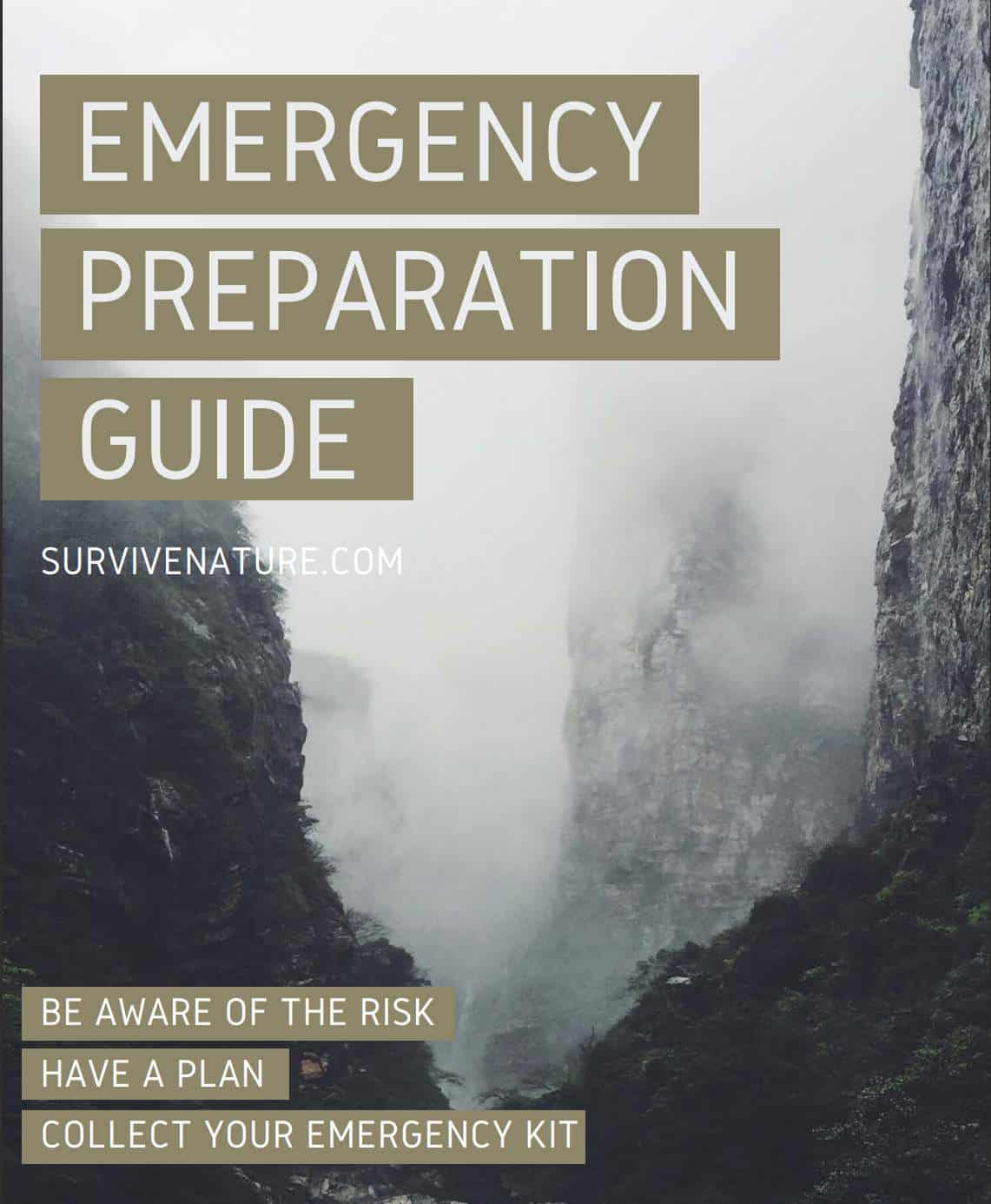Introduction
Every prepper, survivalist, and homesteader should take care to raise their situational awareness, develop proper survival skills, and learn about the best survival gear. All that significantly increases one’s chances of survival. Read the article and find out how to make bleach and boost the quality of your survival by having it among your survival gear items.
To the point
Surely, everyone knows what bleach is. It is a very common item on a prepper’s list. It is a chemical mixture made of natural ingredients employed for whitening clothes and fabrics in the past. The working mechanism behind the bleach is oxidation. In other words, it is the alteration of a compound which starts the reaction once the oxygen molecules are added.
For example, a stain is a regular chemical compound that breaks down the molecules into small pieces once the bleach is added.
Then again, for instance, the cleanser and stirring of the washing machine quicken the cleaning process. And bleach, as a disinfector, acts in the same way. The microbes are destroyed and neutralized by the addition of oxygen. Learn how to make lye in addition to DIY bleach.
Many forms of bleach, such as sodium hypochlorite bleach, and chlorine bleach (chlorine gas, liquid chlorine), are utilized by various manufacturers. They are mainly used to whiten paper, wood, and fabrics. But of course, bleach is mainly used to whiten fabrics and whiten materials of different kinds. The raw materials utilized for bleach production are chlorine, caustic soda, and water.
The manufacturing process of sodium hypochlorite bleach is a really long one. Frequently, it is done in one large manufacturing facility.
Bleach from the History Perspective
First of all, it is important to cover how such a chemical compound as bleach was used in the past when there were no cleansing agents and so forth. And now, preppers around the globe know how to make it DIY.
Let me start by telling you that people have been cleaning their clothes and fabrics since ancient times in Egypt, Greece, and Asian countries. But, as it is stated in the books, in nearly the times of 300 B.C., soda ash was employed for cleaning purposes. The soda ash was extracted from burned seaweed.
1. Middle Centuries
In the Middle centuries, the people from northern countries of Europe used bleach to croft things. The process of crofting is pretty unique: the fabrics were scattered out in huge fields, being exposed to a big amount of sunlight. From Scotland to the Netherlands, the materials from textile mills were shipped to get bleached to get crafted. Then, almost all European countries inherited such a technique. Such bleaching fields were captured in Great Britain in the mid of 14th century.
After several centuries, many bleaching companies emerged. To be more precise, in 1728, in Galloway, Scotland, the business companies were employing the Dutch technique to bleach various materials.
2. Crofting as a Strategy
The clothing materials were soaked in a lye solution for multiple days; then, they were ‘bucked’ and washed until completely clean. After that, the factories were scattered around the fields and were kept there for several weeks. The whole process was repeated 3-4 times until the desired cleanness and whiteness were reached. Furthermore, the fabric and clothing materials were soaked in sour milk or buttermilk, then bucked and crafted by the same old technique.
Of course, such a process was very time-consuming. Another drawback of such a bleaching process is that a huge amount of fields, in other words, the land, was occupied. Such land could be utilized for farming and gardening, which was in favor in the times of famine.
After several decades, in the 18th-century, scientists from Sweden and France discovered a compound that could substitute the previous technique. The name of the solution is chlorine bleach. Chlorine is a very irritating, green-yellowish halogen. It turned out that chlorine bleach was perfect for whitening fabrics.
Some mill factories tried to employ chlorine gas to whiten the fabrics. Nevertheless, the process was very costly, and the fumes from chlorine gas were strong. The workers involved in the manufacturing process were suffering from the fumes, so such a method was prohibited.
3. Contemporary World
As of now, people bleach clothes with traditional chemical cleaning agents. The chemical agents are produced in factories. The agents that are used are chlorine and caustic soda (caustic soda solution) and sodium chloride salt solution. The process of production of sodium hypochlorite bleach is a really long one. Frequently, it is done in one large manufacturing facility.
When Household Bleach is Necessary
As a survivalist, you should acknowledge the potential benefits and, generally speaking, reasons for storing bleach at your place. But not the bleach that you bought at the store, rather, your self-made bleach!
The main reason is that when a disaster strikes and you have tons of bleach stocked in your basement, it will not last long. For example, the 15 bottles of bleach that you bought will run out of their potency in nearly six months! Moreover, not only the bleach has a small shelf-life period, it can just end because you will use it frequently. So, 15 bottles will preserve you in the next six months, but what will you do after?
Speaking about the loss of potency, the vast majority of survivalists do not realize that in case you keep your bottles of bleach at nearly 50-70 degrees F, they will lose a fifth of their potency! A year after, it will lose another fifth of its potency. So, in this way, in case you would like to purify and disinfect your water, the bleach would not work well from a long-term perspective. That is why it is very crucial to know how to make your own bleach.
So, let us get down to business and learn how to make it.
Calcium Hypochlorite
Sodium hypochlorite is the standard component of a regular household bleach utilized in the laundry. The chlorine and caustic soda solution are actually called sodium hypochlorite. Although sodium hypochlorite (and sodium chloride salt solution) is used frequently, another solution called calcium hypochlorite is the one that we are gonna make. This solution is good and secure at disinfecting water and water pools. It is also known as pool shock. The percentage of free chlorine in the pool shock should be controlled.
A pool shock is beneficial over the regular household sodium hypochlorite bleach when it comes to SHTF. A pool shock can be found on the shelves of stores in a dry granular form, so it does not occupy much storage space. And when it is kept in a cold, dry, and dark place, its shelf life is solid!
1. How to Make Calcium Hypochlorite Bleach at Home
First of all, one should acknowledge that there are only two ingredients: calcium hypochlorite and “other” or “inert” ingredients. In any other way, you will just poison yourself. You should make a correct concentration that is very much similar to household bleach, i.e., two tbsp of pool shock and three cups of water.
Then, just mix up the ingredients, which will cause a chemical reaction, which will result in a milky color of the solution. The solution should sit for several hours, and it will start to turn yellowish, just like a regular household bleach in a liquid form.
2. Methods of Utilization
To use the mix, i.e., to sanitize the water, you should put eight drops of bleach solution per bottle of water (a gallon), and here it is – your sodium hypochlorite liquid bleach. You can put your solution in a plastic jug.
3. How to Store Calcium Hypochlorite Bleach
One should keep the mixture in a cool place. It is important to make only the needed amount of solution for the nearest future. Mix the ingredients and put them in the cup with double walls. When you run out of the beach, just make a new bottle. This will help to prevent the solution from running out of shelf life.
There is a warning: you can check the proper concentration of the solution by utilizing the chlorine test strips.
Peracetic Acid
As Environmental Protection Agency mentions, peracetic acid is useful in many ways: it kills bacteria all over the place; for example, it can kill parasites. Such parasites are bugs, and they include e. Coli, salmonella, listeria, staphylococcus aureus, Shigella, candida mycoderma, and many viruses, including the flu. All of those bugs can be found in water and other liquids, and it is important to conduct disease control.
So, to disinfect water, one can mix hydrogen peroxide and acetic acid. The method is so trustworthy that it was approved for medical sanitation purposes.
The only drawback is that the peracetic acid has a small shelf life period. So, while making bleach with this component, we would suggest keeping the peroxide and vinegar separately. And mix them up only in the process of making bleach.
How to Use:
In case you want to purify the water and kill the bugs fully, you will require standard household peroxide that has a three percent of concentration and vinegar with a concentration that ranges from five to seven percent.
As already mentioned, keep both of the ingredients separated from each other and mix them only when needed. Mix the ingredients and put them in the cup with double walls. Once they are mixes, spray them on the surface and let them sit for several minutes. You can even let it air-dry.
How to Store Peracetic Acid Solution
Hydrogen peroxide is sensitive to light and should not be exposed to light, so it comes in a dark bottle. So, it should be stored in a cool place, along with vinegar. You can put your Peracetic acid solution in a plastic jug. The temperatures are moderate: from 50-70 degrees Fahrenheit. Once again, you should acknowledge the rules of behavior with chemicals, i.e., wear gloves and work in a well-ventilated area.
Final Word
Today we have covered the history of chlorine gas and liquid chlorine utilization. There are many ways how to work with homemade bleach, and we would like to hear about your experience in the comment section down below!
Frequently Asked Questions (FAQ)
How long does bleach stay in the water?
No chemical reaction must emerge once drinking water and bleach intersect. And when those two liquids are mixed together to make a disinfecting solution, the solution will work only for the next 24 hours. Although the temperature of the water does not impact the bleach in any way, its disinfecting properties begin to lose their potency after one day.
Does the home store bleach have chlorine?
That is a tricky question. The thing is that chlorine bleach is just a sodium hypochlorite mixed with water. And the bleach that people use every day at home is the laundry sodium hypochlorite, a concentrated solution. Such bleach contains five and a quarter percent or six percent sodium hypochlorite. So, yes, indeed, chlorine is a component of the home bleach in the form of sodium hypochlorite bleach.
What is the most potent bleach for cleaning?
According to the data on the Web, Clorox Regular Bleach2 is the best and the strongest bleach. It is used for home laundry to clean all needed surfaces. It also removes stains and whitens the fabric. It is important to follow the rules of using chemical solutions and wear protective gloves in order not to irritate the skin and eyes area.


